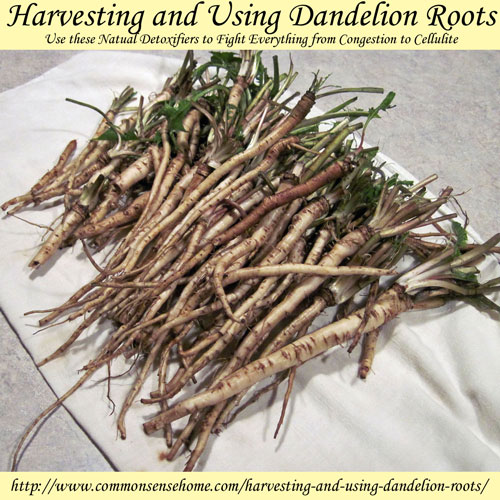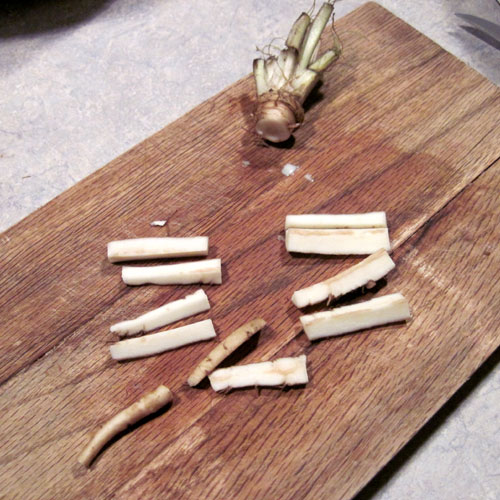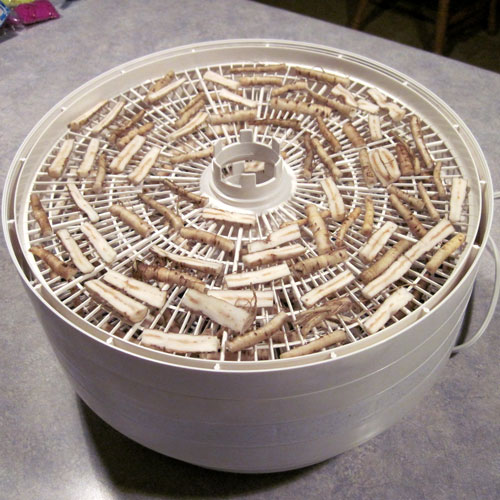Lard has received a bad rap... the truth of it is, lard is better for you than vegetable oils. I remember growing up using lard, real butter and whole milk in the early 1950's of Los Angeles. Yep, I am the product of an Arkie and an Okie who came out to California during the dust bowl years with their families. They brought with them the eating habits of farm life in the south. But then came the barrage of advertising campaigns on the radio and new-fangled TV telling us that store-bought milk, margarine, and Crisco was much healthier. My parents for convenience sake fell into the same dark hole as the rest of America, thinking that this new way was actually better because it was cheaper, besides the science behind it, we thought, proved its health benefits. I moved from home in the early 70's and bought pasteurized milk, Crisco, and margarine thinking I was eating healthier too, after all the FDA told us it was. Lard became an archaic food reminiscent of a time gone by; it was something my grandma still used because she didn't know any better; she said that she just didn't like they way that new-stuff smelled. But we were modern, up to date, wiser than previous generations, and scientific, so we went with technology. Lard just melted away into the mental oblivion of our minds along with the horse and buggy, hauling water from a spring, and out-houses.
How proficient was the advertising campaign of big business? Even today, when inner-city children are asked the question "what is lard" they really don't know how to answer. They may have heard someone older making derogatory remarks towards fat or obese people, therefore associating it with fat people. But unless they had a great teacher or was raised on a farm they generally would have no idea what lard was or where it came from.
The modern housewife over the last century has been sold a bill of goods on the evils of pork fat and the healthiness of hydrogenated vegetable oil. Yet it has only been in this last century that Cancer, Alzheimer's, Parkinson's, and Diabetes have all reared their ugly heads and become more rampant, killing and immobilizing millions. One may think as they read this "what's wrong with vegetable oil and what's so darn good about lard?" First of all, throughout history man has used pork or animal fat for the cooking of their foods and historically as you may already know, obesity and these other diseases are a rather modern phenomenon. New evidence proves that these diseases are scientifically attributed to all of the processed or engineered foods we ingest today, this would include modern day hydrogenated vegetable oils.
You may also say, "If vegetable oil is so bad for us, then when and why did we start using it if it wasn't better than lard?" A little history first: William Procter departed for America after a fire destroyed his business in England, he was a candle-maker. James Gamble left Ireland and came to America because of the potato famine, he became a soap maker. They married sisters, but when the depression of the 1870's hit they joined forces to survive, they called their new founded company 'Procter and Gamble', a soap and candle manufacturing company. In the early twentieth century this company also produced great amounts of cotton, they were doing very well for themselves, but they had just one little problem... hoards of cottonseed as a byproduct that they could do nothing with because it was a very toxic substance. They found that after pressing and heating it they could extract a very inexpensive oil, but it turned rancid quickly. After more experiments it was discovered that hydrogenation would keep the oil from spoiling, in fact it had a very long shelf life, plus it looked just like lard, and after more experiments they solved their problems. They gave it the name of Crisco and went on an advertising campaign. They advertised it as healthier than lard, even handed out free cookbooks they had rewritten adding Crisco in and removing lard from its pages. This new product was cheaper than lard so why not use it if it cost less and the experts say it was better!
The Atlantic reported:
"Never before had Proctor & Gamble or any company for that matter put so much marketing support or advertising dollars behind a product. They hired the J. Walter Thompson Agency, America's first full service advertising agency staffed by real artists and professional writers. Samples of Crisco were mailed to grocers, restaurants, nutritionists, and home economists. Eight alternative marketing strategies were tested in different cities and their impacts calculated and compared. Doughnuts were fried in Crisco and handed out in the streets. Women who purchased the new industrial fat got a free cookbook or Crisco recipes. It opened with the line, 'The culinary world is revising its entire cookbook on account of the advent of Crisco, a new and altogether different cooking fat.' Recipes for asparagus soup, baked salmon with Colbert sauce, stuffed beets, curried cauliflower and tomato sandwiches all called for three to four tablespoons of Crisco."
So why is cottonseed oil that bad for us? One small reason is that it is not considered a food at all, so it is not regulated by the Food and Drug Administration, therefore Corporate farms can apply as much pesticides to it as they wish. There are reports that disclose cotton has more pesticides sprayed on it than any other crop in the world!
Here's a little information about cottonseed oil appearing in The Happiness Diet:
Before processing, cottonseed oil is cloudy red and bitter to the taste because of a natural phytochemical called gossypol and is toxic to most animals, causing dangerous spikes in the body's potassium levels, organ damage, and paralysis. An issue of Popular Science from the era sums up the evolution of cottonseed nicely: "What was garbage in 1860 was fertilizer in 1870, cattle feed in 1880, and table food and many things else in 1890."
Now on to the hog! How healthy is Lard?
Hog lard contains high amounts of vitamin D; just one tablespoon has 1,000 IU of it. Some believe that they can get all the vitamin D they need from plants, this is true but you would have to eat in excess of fifty mushrooms a day to get what is needed because they, being the plant life with the highest vitamin D contains only 21 IU's . Vitamin D aids in the absorption of calcium helping to keep osteoporosis at bay and is also known to improve oral health. Vitamin D will also aid in the removal of harmful toxic metals from the body. A little research will open your eyes to many benefits of lard.
Please do not run off to the grocery store and buy a can of lard; today's lard is hydrogenated and is not good for you. If you don't live on a farm which most people don't, then purchase your pork chops, steaks, bacon, roasts and ribs from someone who raises organic pork. Then either freeze, smoke or can it until you are ready to use it. You can gather a few friends to go in on a whole hog and save quite a bit of money, but always ask the butcher for all of the fat and place it in the freezer until you are ready to render it.
How do you render the precious lard? I started by purchasing an organic hog from my good neighbor Max Hale, it was a scrumptious tasting hog but unfortunately the butcher didn't get the memo to save all of the fat for us. When we got home with our hog, what we thought was a big bag of hog fat was nothing more than a bag of bones; it sat in the freezer for months before we came to that realization. There was still ample fat on the cuts of meat for us to render our own lard as we ate the pork. Here is how we did it:
I believe that our forefathers knew the best way to render hog fat, they always used a large thick cast iron cauldron. Since I have not purchased a large cauldron as of yet and realizing that I didn't receive large amounts of fat from the butcher, we only rendered enough lard from the trimmings of the pork we used.
Cut the fat from the pork whether it is chops, roast or steak and slice into small pieces for the quickest results. Place the fatty pieces into a well warmed cast iron skillet (medium heat), then turn the flame down to low (very low) for the duration of the rendering process for the best results. It will take a while so don't get overly anxious.

As the fat begins to heat up it will bubble slowly, so keep stirring it so it does not burn... it can burn even on low.
If you want extra white lard, ladle the oil out of the skillet before the fat pieces begin to turn a golden color. We use it so fast that it doesn't really make that much difference to us. But the darker the fat pieces gets the slightly darker the lard will be, but it all still tastes relatively the same. For canning it always looks great to see snow-white lard on the shelf.
When you have decided that the oil should be removed, which is a personal decision because there is no set time (except it should be removed before the fat pieces are turning really dark brown to black), pour or ladle the liquid through a fine sieve to remove minute chunks of fat residue.

I poured the melted fat on top of our old lard that we were currently using, you can also pour it into jars and keep them in a cool pantry or root cellar for whenever you want to use it. Some say that it will only last 6 to 9 months in cold storage so they recommend that it be frozen. One man said that he had put some fresh rendered lard in his pantry uncovered, and over a five year period he has continued to check on it, and he found that no change in the lard has occurred. There was even a story recently in the german news telling about a gentleman that received a can of lard in 1947 when the U.S. was sending aid to a war torn Germany. He saved the can thinking it would be needed later... fast forward 67 years (2014) when he opened the can and had it tested... it was just fine.
We do not refrigerate our lard. We set it out on the counter and use it, but again we only render as we need. I am sure next year we will render our lard all at once and can it. I believe (I do not know for sure) that the whiter the lard is the longer it will last. It seems to me that it is the impurities in the oil that causes it to spoil, so the first oil taken out of the cauldron or skillet before the fat begins turning brown is the best.

I wanted to get a shot of the finished product but it was being used faster than I had thought it would be. So I can only give you a picture of the lard bowl that the new oil was poured into over the old lard. Although this lard is not snowy white it still tastes great.
Lard makes everything taste great especially pie crusts, we cook with it extensively now we have learned that all of the negative press over the last century has been nothing more than false advertising. This process is easy and not too messy at all.
Caution: Even if you are a pro at rendering a whole hog into lard using the old fashioned cast iron cauldron be sure to put the lid on it or at least keep small children away. My grandfather was 23 in 1920, he was helping his father butcher hogs on a cold 2nd of January day. His five year old brother Sammy, tripped and fell head first into a boiling cauldron of hog fat, the pain laden little child cried loudly for several days and then passed. What started out as a festive new year filled with fun and games, where children ran, played, and occasionally stopped to pick out a floating cracklin' from the top of the pot to enjoy what we call pig skins, ended up in tragedy, leaving a huge void in the family. The family rumor has it that his mother never recovered from that incident.
Be cautious even in the safe confines of your own kitchen... many a child has stumbled under the foot of a busy mother by a hot stove to receive severe burns, I know, I was one of them.
phil

















